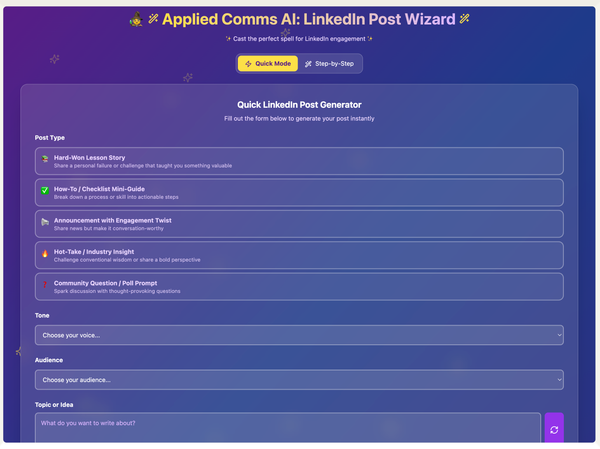Tool Testing: Our Review Methodology

The communications world is drowning in AI tool recommendations. Most appear to be written by people who've never actually used them.
Our approach is different.
Testing Models
Every tool gets tested on communications work – the type we have actually done in the past, or that we are currently doing.
Tools that only work in perfect conditions aren't much use to working professionals, so we test with time limitations, looming deadlines, replicating the types of issues which will affect real-world use.
Our Independence Standards
We buy our own subscriptions or use genuine free trials. No vendor demos, no special preview access that comes with implicit obligations.
When vendors offer review units or extended trials, we decline. The moment someone gives you something for free, your objectivity is compromised, even if you think it isn't.
We don't accept advertising from tool providers we review. This limits our revenue options but keeps our recommendations clean.
What We Measure
- Practical utility: Does this save time on real tasks? How much setup is required? What's the learning curve like?
- Cost effectiveness: Not just the subscription price, but the total cost including time investment, training needs, and integration complexity.
- Reliability: Does it work consistently? How does it handle edge cases? What happens when it breaks?
- Integration: How well does it play with existing workflows? Does it require wholesale process changes?
The Bottom Line Test
Would we recommend this to a colleague on a limited budget who's spending their own money? That's our ultimate benchmark.
We'll tell you who each tool is actually for, not just list features. A tool that's perfect for a one-person consultancy might be useless for a corporate team, and vice versa.
Expect honest verdicts, delivered in the plainest language we can muster.




